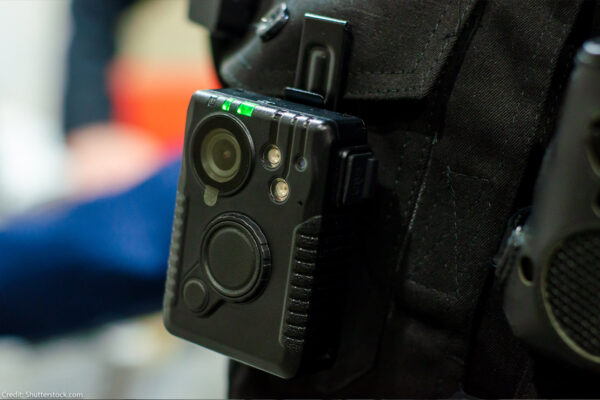Nearly final returns from the Anchorage election suggest that voters approved Proposition 4, which provides tax funding for body-worn cameras for Anchorage Police Department officers.
Body-worn camera footage provide an independent record of police behavior that, when made public, can reveal abuses of power, challenge police narratives, and can contribute to accountability. Footage in the case Army Lt. Caron Nazario, and the killings of Daunte Wright and Adam Toledo, are powerful recent examples.
But we have also seen numerous examples of why simply acquiring and deploying body-worn cameras does not alone guarantee accountability and public oversight. From officers not turning on cameras when they should be on, to not making footage public, there are a lot of ways body-worn cameras can be ineffective or even counterproductive. The rules around how officers use body-worn cameras, and what happens to the footage, are vital to delivering accountability and protecting privacy.
The Anchorage Police Department (APD) has already started drafting a policy, and we are working to ensure it’s strong. But it is also vital that APD follows through on a commitment to solicit public input on these policies. Before officers start using this new technology, the community should know what’s at stake. Here are the standards we see as especially important.
When to turn the cameras on and off
Keeping the camera rolling as long as the officer is on duty isn’t the solution. This would turn body-worn cameras into tools of mass surveillance and leave the APD with an unmanageable volume of footage. At the same time, we want to make sure officers capture incidents of misconduct.
A strong policy would require officers to activate their cameras during any call for service or when initiating an encounter with the public. Of course, there may be times when an immediate threat to an officer’s life makes that impossible or dangerous. Additionally, the policy should require officers to record the entire encounter, make sure people they’re filming know they’re being filmed, and offer to stop filming in a few situations – like when entering somebody’s home, or during an encounter with a victim of crime.
In order to protect the public’s free speech and association rights, officers should be explicitly prohibited from using cameras to gather intelligence based on First Amendment-protected conduct, like a rally or protest. Camera use should be limited for legitimate law enforcement encounters.
Retention and Deletion of Footage
Retaining video footage isn’t cheap, nor is it always good from a civil liberties perspective. As valuable as it is to hold on to footage needed to hold police accountable, we don’t want departments creating a huge database of footage that could be accessed at any point in the future.
The APD should establish a standard timeframe to retain and delete footage, and a longer timeframe for retaining any footage that captures a use of force, or an encounter about which a complaint was filed. The policy should also allow for a longer retention period to be requested in some circumstances.
For the most serious incidents – like a police-involved shooting or use of force that results in someone’s death – the policy should also make sure the footage is handled properly for investigative purposes and public transparency.
Review of footage
The APD’s draft policy does not allow officers to review or copy recordings when there is an in-custody death, a deadly use of force, or a use of force or police action that results in serious injury. This is a good thing. Allowing officers to do so would undermine the legitimacy of investigations, give police the ability to shape a narrative out of public view, and enable lying.
But a short list of other people ought to be able to review footage for as long as it is retained. For instance, people who are subjects of footage, or their attorneys, should be able to review the footage.
Public disclosure of footage
For body-worn cameras to be tools for accountability and transparency, the program needs to have explicit rules around when footage can or must become public – and when it can’t. When footage captures somebody being killed, for instance, we want a policy that requires it to be released, and quickly. And we also think APD should not withhold footage because it’s associated with an investigation into officer conduct.
At the same time, we do not want APD sharing footage carelessly. The rules should require written permission from the citizen subjects of footage for non-critical incidents, and should ensure that footage not be shared unless authorized. We would not want, for instance, footage to be shared in ways that might violate due process or improperly expose that someone had an encounter with police.
Analysis and modification of footage
A strong policy would also prohibit use of facial recognition or other biometric analyses, which have been shown to be prone to racial, gender, and age bias and dangerous surveillance tools. It would also describe a narrow set of circumstances in which video can be redacted, in order for video to be released publicly.
Have comments or questions? Please don’t hesitate to reach out to Michael Garvey, Advocacy Director, at [email protected].


